Product Close-ups
USA Trains Head-end Cars
Nov 14, 2007


By Noel Widdifield
LSOL.com Managing Editor |
Author
Bio
At the time they came out, USA Trains said that they would eventually bring out the head-end cars for the set, which they did and I finally got around to ordering them...
|
Back in 2003, I purchased an eight-car set of the USA Trains New York Central extruded aluminum passenger cars. I wrote an article about (First Impression: USA Passenger Cars) them for LSOL.com and have loved looking at them and running them ever since. At the time they came out, USA Trains said that they would eventually bring out the head-end cars for the set, which they did and I finally got around to ordering them. The cars arrived in the usual red, white and blue USA Trains boxes. 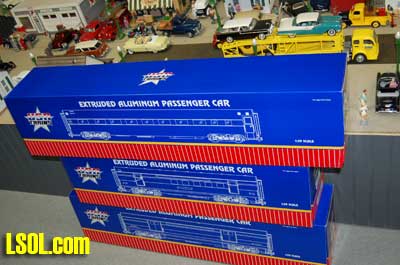
The cars were packed in foam packaging that appeared to be greatly improved over previous USA Trains passenger car packaging. 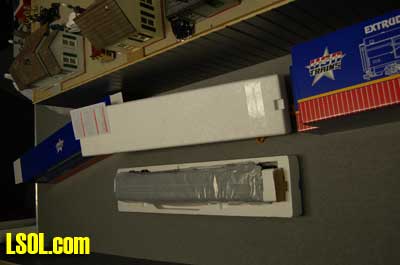 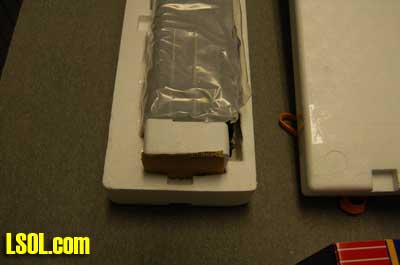 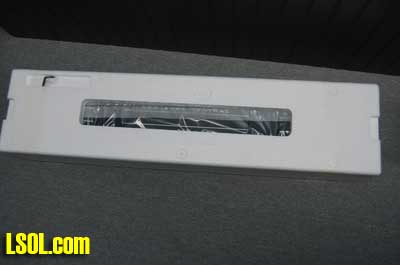 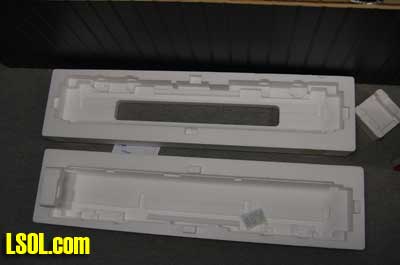
Like the eight cars I already own, these three are beautiful models of the smoothside, streamlined cars that the New York Central purchased starting in the late 1930s. This set of cars is made to represent the cars for the late 1940's 20th Century Limited train that was the NYC's most famous train. Later these cars made their way into most NYC named passenger trains and eventually became part of nearly every NYC passenger train before the New York Central Railroad vanished forever. The New York Central, like most railroads at the end of World War II, believed that these streamlined trains would lure passengers back to the rails. 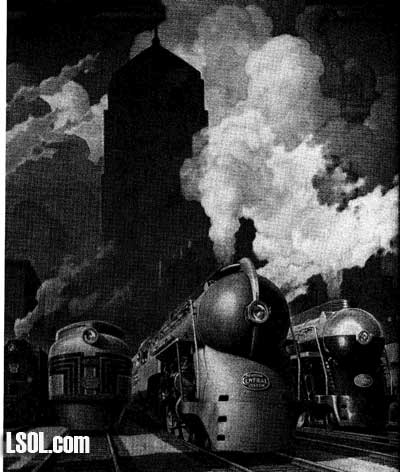 When the NYC began to upgrade their passenger trains, they first went to Pullman Standard for most of those new cars. The cars in the USA Trains set represent cars built in 1938, 1941 and 1948. These cars were the epitome of most railroads' passenger fleet during the era when passenger business was still a main feature of most railroads. In 1945 alone, the NYC ordered 420 new lightweight passenger cars, bringing their total of these NYC cars to 720.
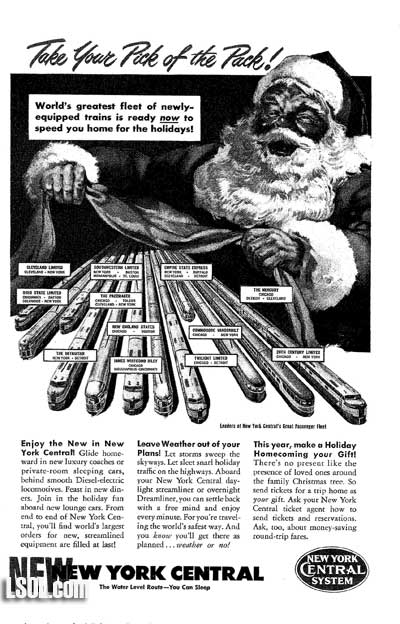 The set I purchased consists of a Railway Post Office, a baggage car and a combination baggage and crew quarters' car. The RPO in 1/29 scale is 60 feet long, ten feet wide and 13 feet six inches above the rails. This measures out to the prototype dimensions for some of the smoothside, streamlined cars purchased or rebuilt by the NYC in the late-1940's. 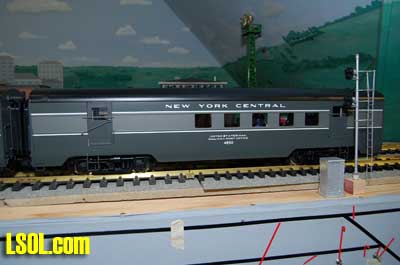 Railway Post Office (RPO) cars were railroad cars operated in passenger service allowing Postal Clerks to sort mail en route to speed delivery. The RPO was staffed by highly trained Railway Mail Service postal clerks, and was off-limits to the passengers on the train. Many railroads collected large revenues through the contracts with the Post Office to carry mail on intercity passenger trains. Most of these railroads continued to run revenue losing passenger routes because these contracts offset the losses from passenger traffic on these routes. Large bags of mail were delivered to the cars by post office employees a couple of hours before departure time. The on-board postal clerks then began the job of sorting the mail, much the same as clerks in the local post office sorted the incoming mail. Mail was also collected and delivered along the route of travel. Mailbags were offloaded at station stops or thrown from the RPO at towns where the train did not stop. Mailbags were picked up at station stops or by mail hooks on the side of the RPO at those cities and towns where the train did not stop. 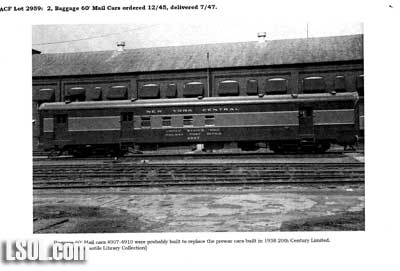
The California Train Museum in Sacramento, California has an excellent RPO exhibit. When we were at the National Convention in San Calra in 2006, we stopped at the museum and spent some time at the RPO exhibit. A very nice former RPO clerk gave us a tour and explained how the process worked back when the mail still moved by rail. 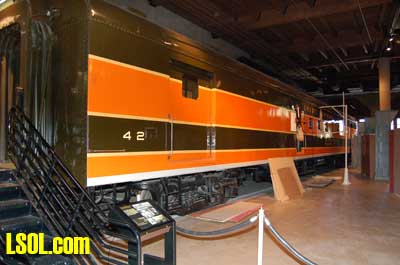 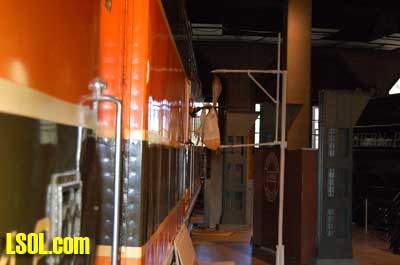
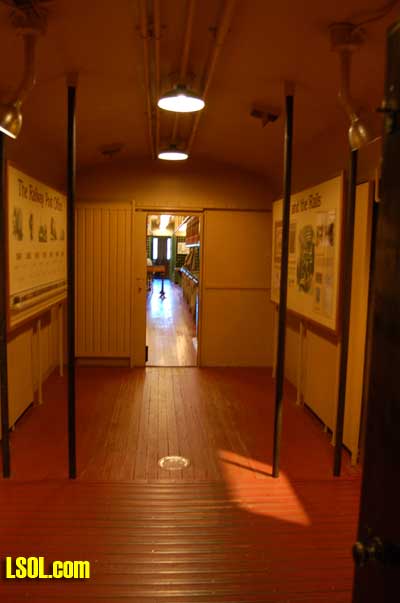 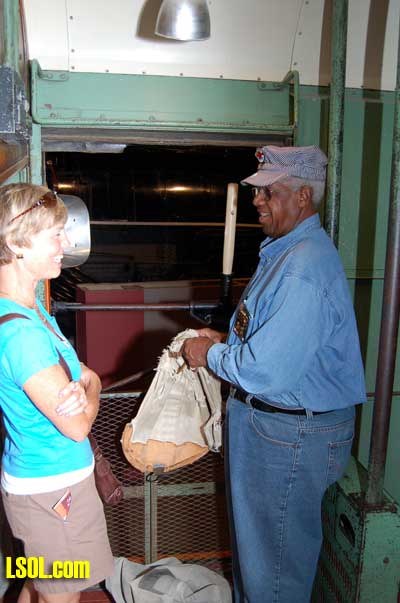 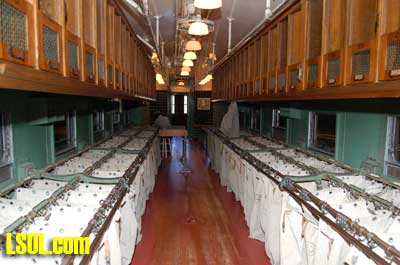
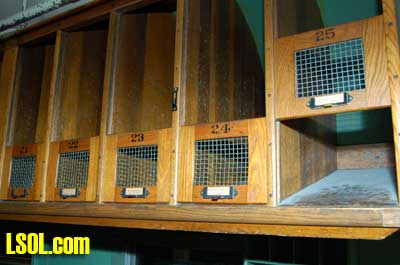 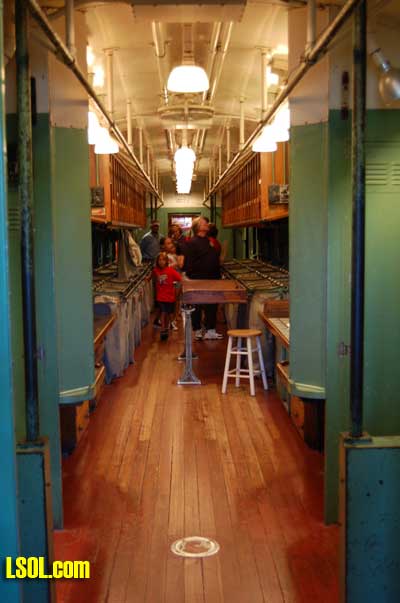
The USA Trains RPO has the correct small baggage/mail doors at each end with the mail hook pick up device at an end door and a restraint bar on the other end door on each side. I suppose I should construct a mail crane for a couple of small stations along my railroad. 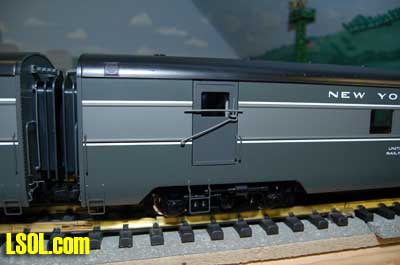 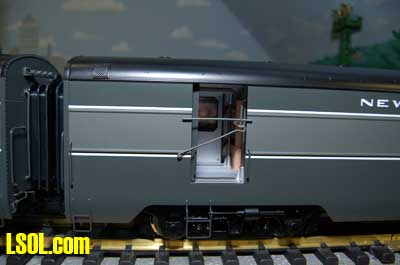
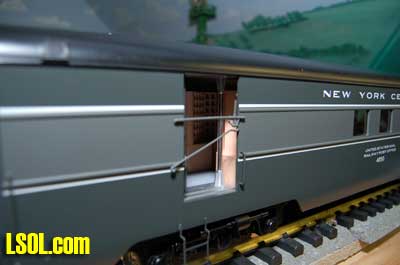 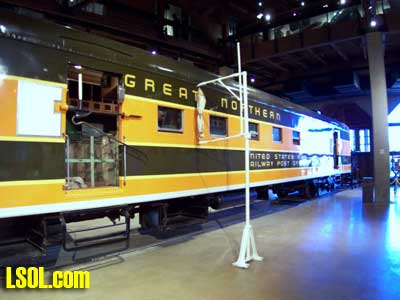 The interior of the RPO included a plastic recreation of the mail compartment on a prototype RPO. I want to get inside of the car and paint the interior realistically, although the interior is pretty authentic looking through the windows. The only problem is that everything is the same color. There are two figures representing the postal clerks and they even have letters in their hands. The number 4850 on this car could not be found as a correct number for an RPO for the NYC. It is a number that is listed between two build sets, but I could not find anything on that specific number. It is in the correct sequence for RPO's, but apparently was not used. The USA Trains people told me that this car was modeled upon the American Car & Foundry (ACF) RPO cars.
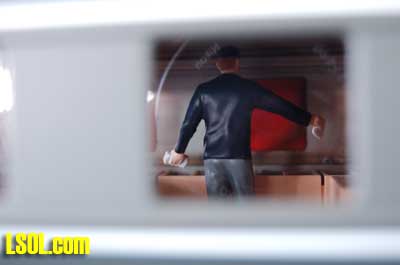 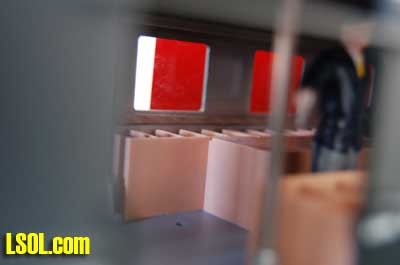 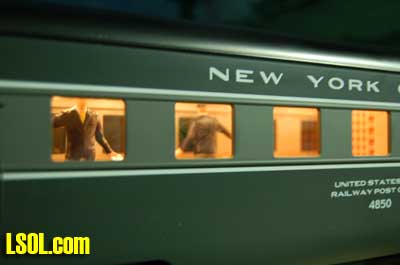
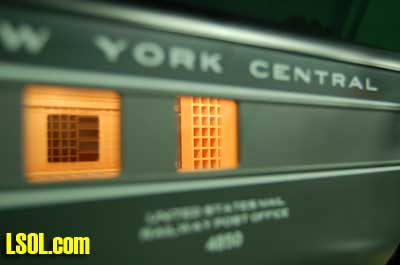 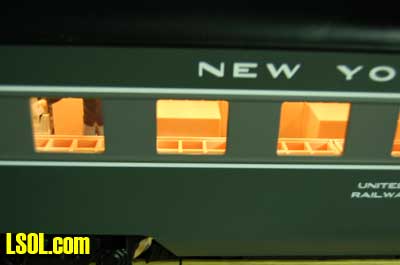 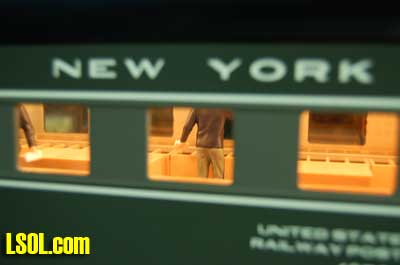
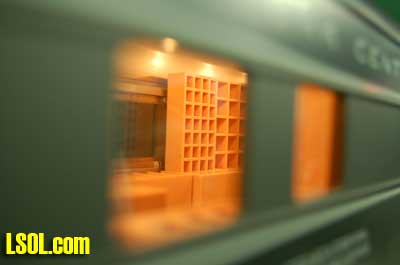 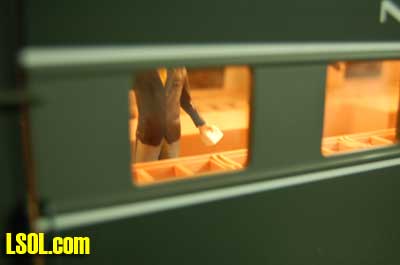 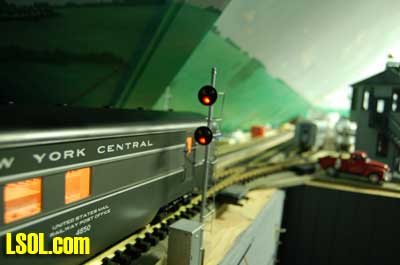
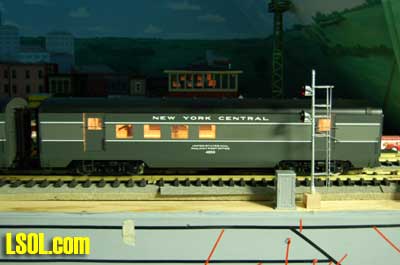 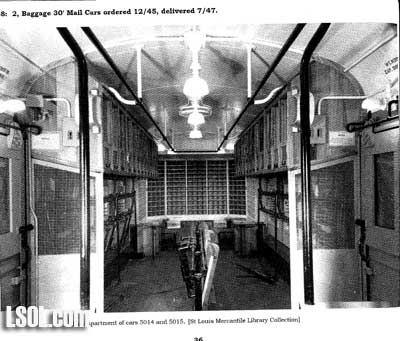 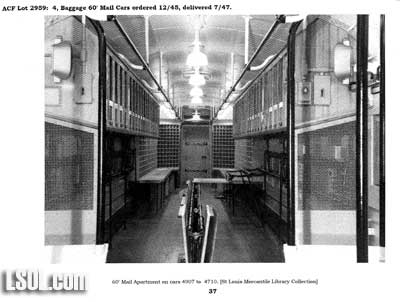
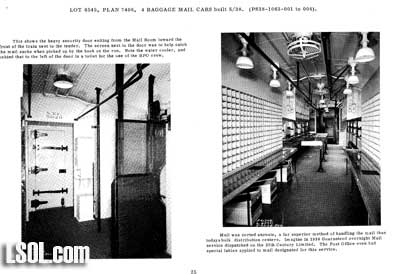 The second car is a baggage car that matches the Pullman Standard or American Car & Foundry baggage cars built in the late 1940's. The car in 1/29-scale measures 70'4" from end-to-end, is 10 feet wide and 13'6" high, which are the correct dimensions for this type of car and the USA Trains people identify it as an ACF car. 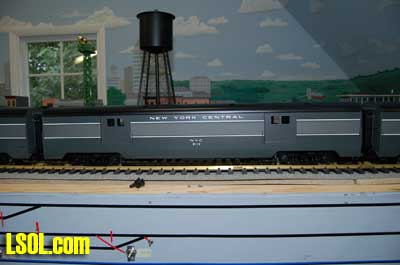 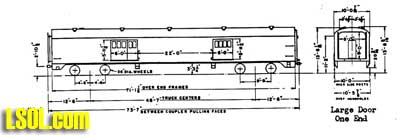
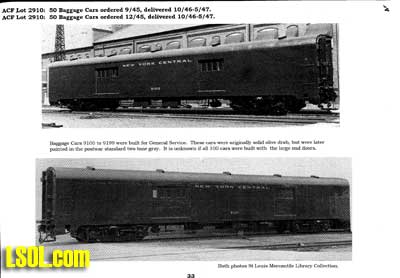 This car is plain, with two large baggage doors on each side. The interior consists of some bracing poles and wooden floors as were found in the prototype cars. The car number 9110 matches an ACF car built in the late 1940's for the NYC. The doors on this and the other cars open by pushing slightly inward and sliding the doors toward the end of the car. They operate very smoothly and stay open while the car is in motion, unlike the doors on other manufacturers cars that tend to close through the vibration of the car in motion. 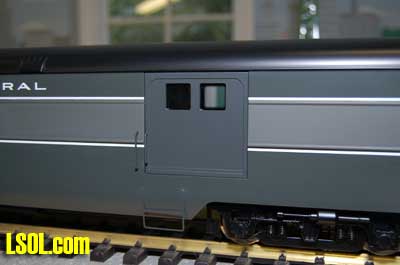 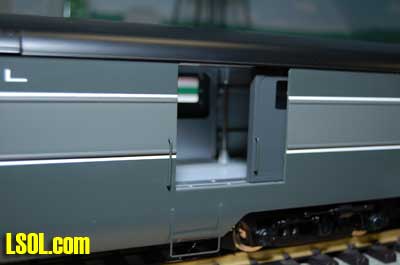
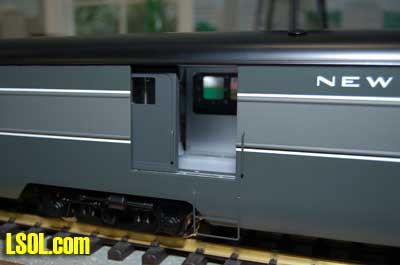 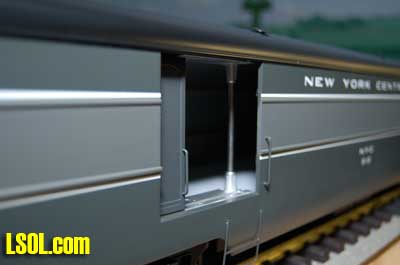 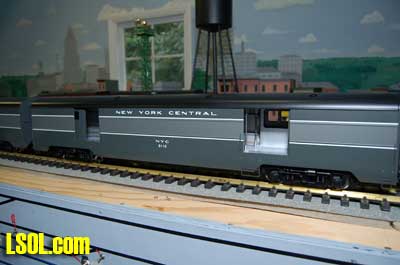
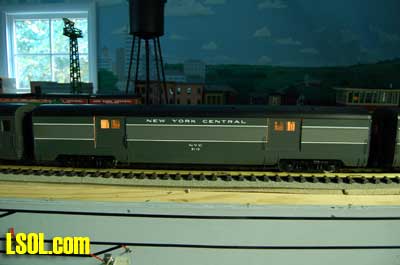 The final car is a combination baggage and crew quarter's car. It matches the Pullman Standard/ACF cars built or converted in the late 1940's to match the other streamliners being purchased by the NYC for their "worlds greatest fleet of newly-equipped trains". The USA Trains combo car measures 80' 4" end-to-end and 85 feet over the couplers. It is 10 feet wide and 13'6" high over the rails. This matches the prototype ACF car exactly. 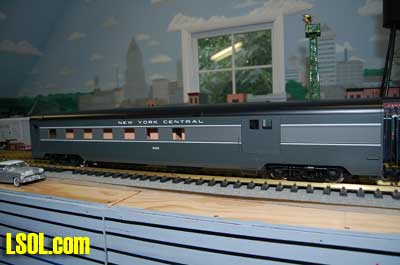 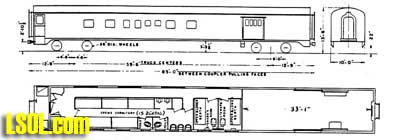
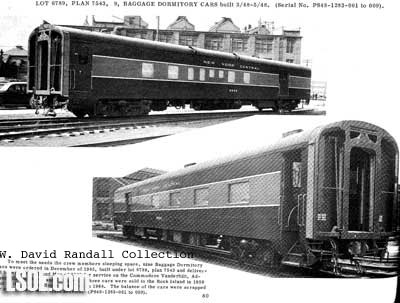 The interior is detailed with what appears to be three small compartments and a dormitory area with bunks for the service crew. The compartments have bench seats where the prototype would have had at least double and usually triple bunks. The dormitory area features flat platforms on each side and these would have been double bunks and bathrooms. The car is numbered 2802 which I have been unable to find in any of the New York Central passenger car reference books. There are several USA Trains passengers seated in the compartments and dormitory platforms. If I can get inside this car, I will outfit the interior with more prototypical furnishings. 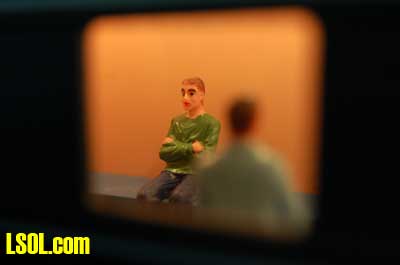 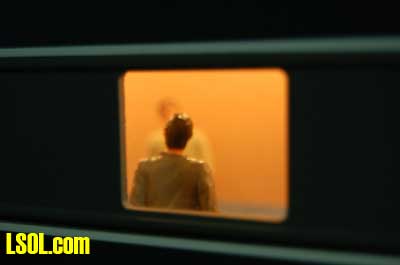
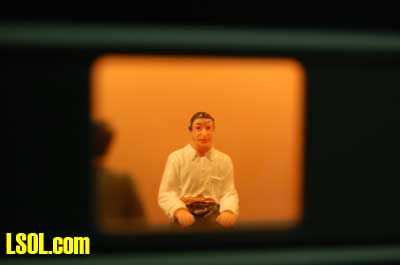 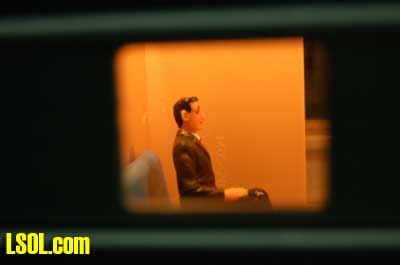 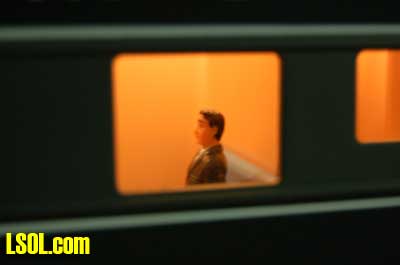
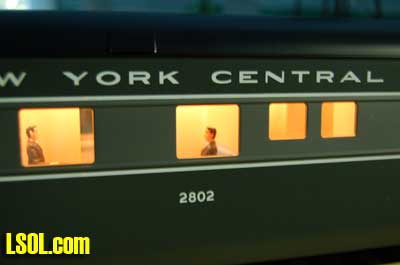  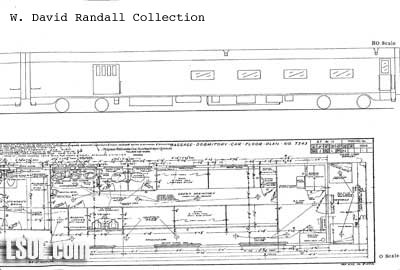
All of the cars have excellent details and crisp paint and lettering that closely follow the prototype. 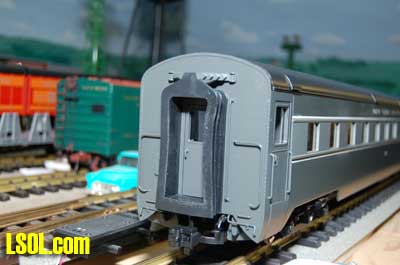 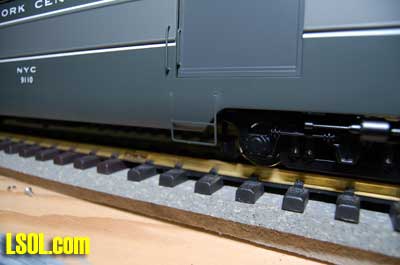 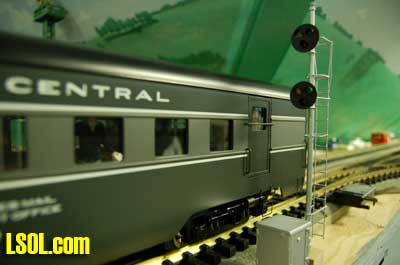
  
The tops of the cars are nicely detailed and appear to replicate the prototype with air vents and air conditioning details. 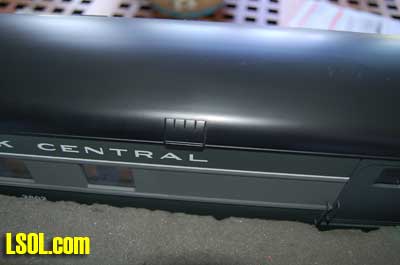 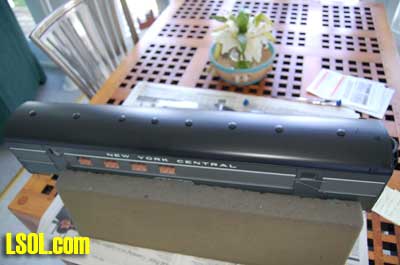
The trucks and wheels are close to the prototype except for the shiny silver wheels that I thought were going to be blackened on this run of cars. The trucks appear to be the correct 1940 version of the GSI truck and has the correct Timken flanged box roller bearings. The cars with standard passenger doors have working fold-down steps on the ends, 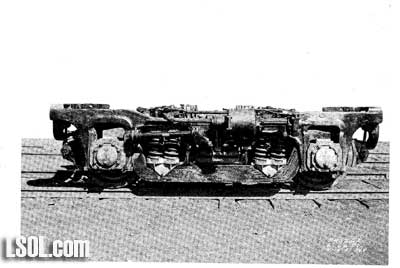 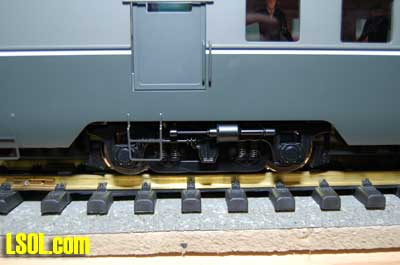 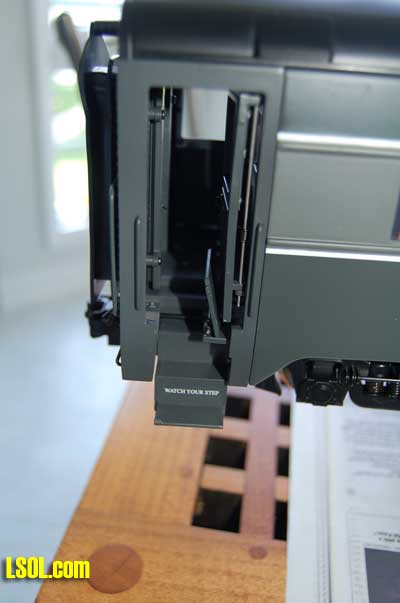
The underbody details appear to be representative of the machinery found under the prototype cars and each car has different sets of appliance underneath. Each car has an on-off switch for the interior lights.   
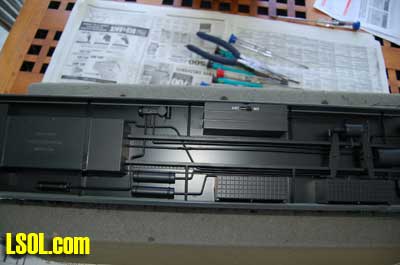 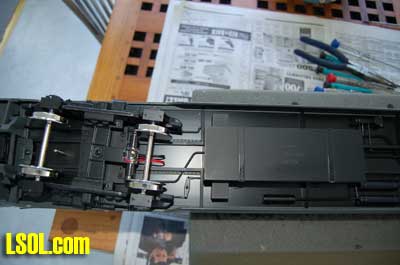 
The full set of USA Trains smoothside, streamlined passenger cars makes up a beautiful train. They come in a large number of roadnames. Although they are expensive, they are the most beautiful and accurate set of passenger cars available in G scale today. Here is my set running behind the USA Trains PA-PB-PA NYC locomotives on my indoor railroad. I have two USA Trains NYC dome cars that came with the early set I purchased. Because the New York Central did not have domes, I usually don't include them in my train when I run it. They complete the set of cars and they are worth the money if you like 1940's - 1970's passenger trains. 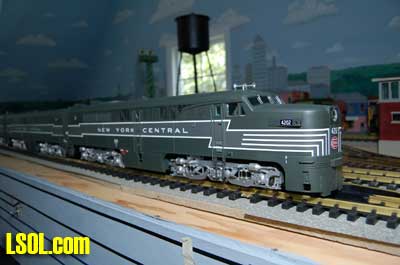 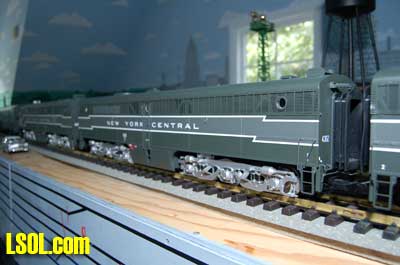 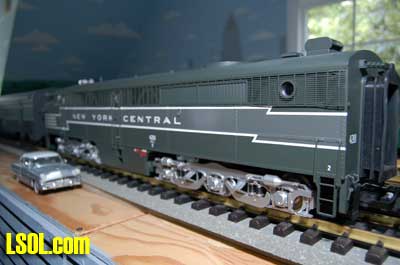
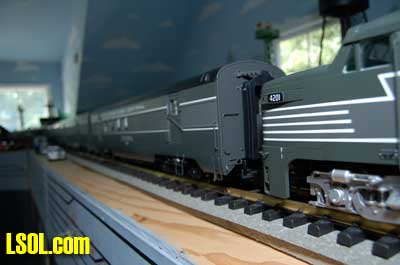 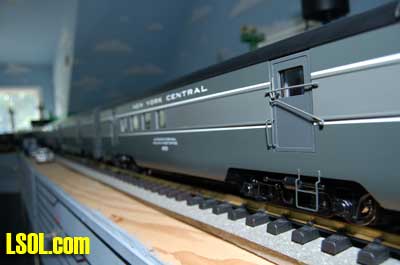 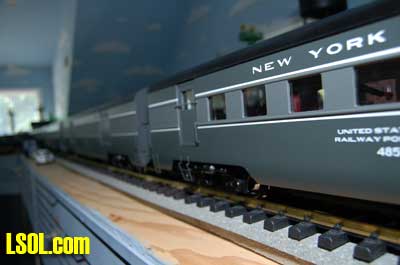
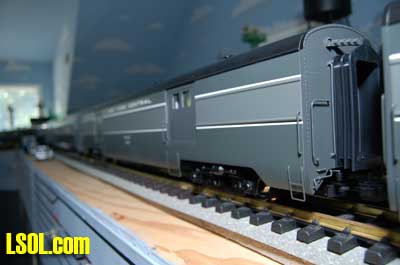 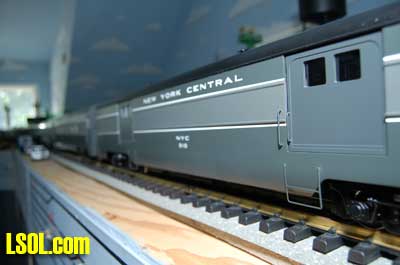 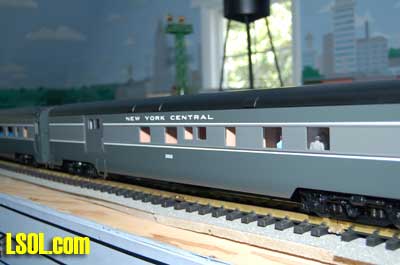
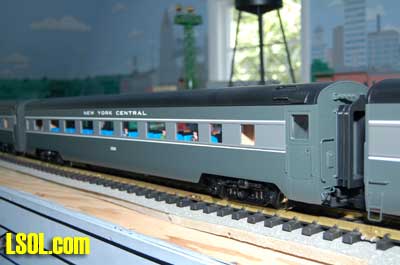 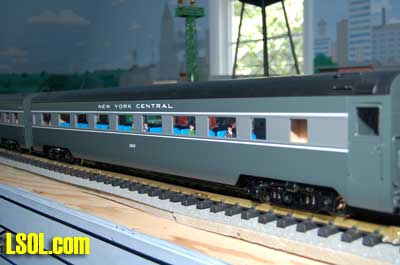 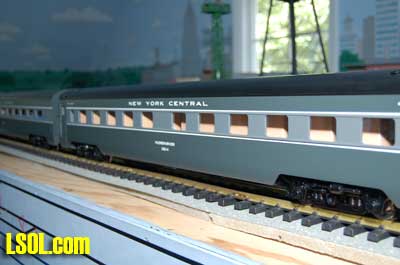
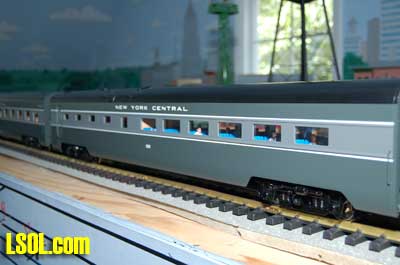 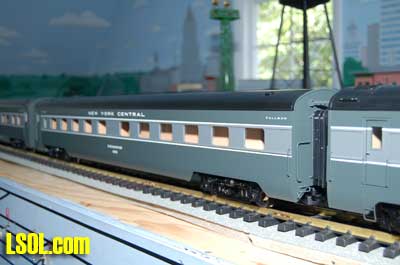 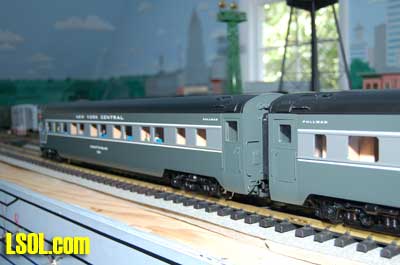
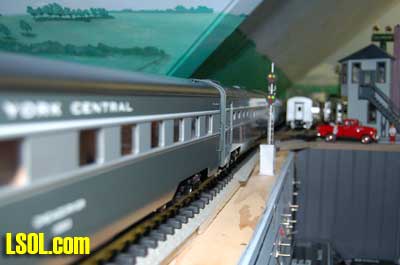 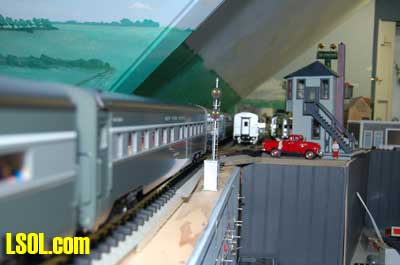 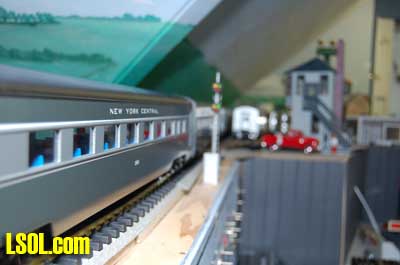
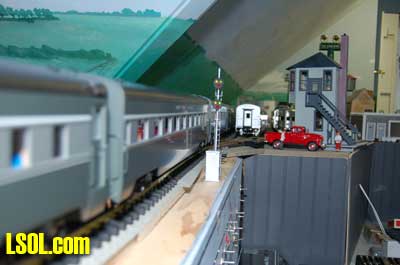  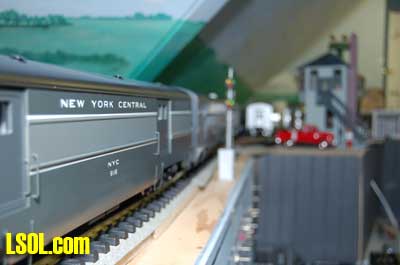
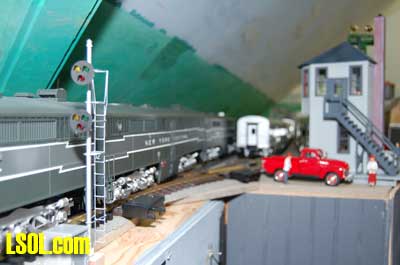 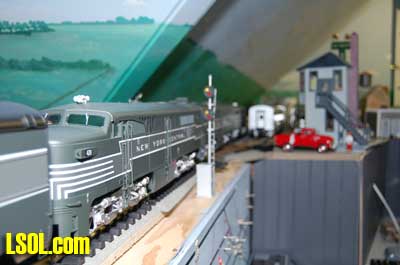 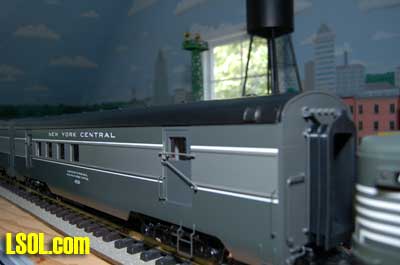
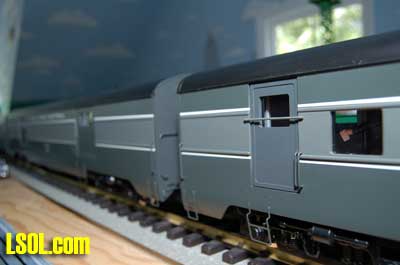  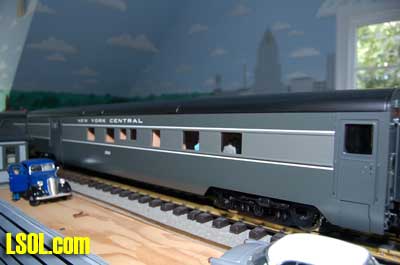
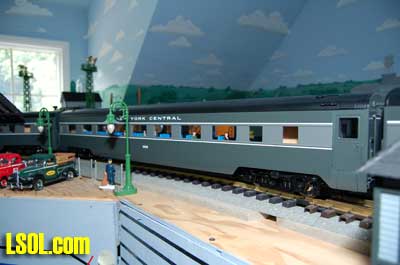 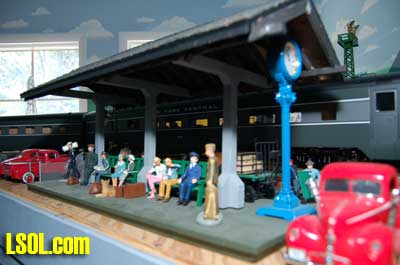 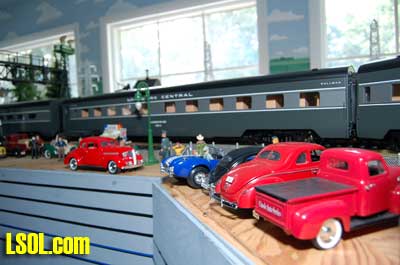
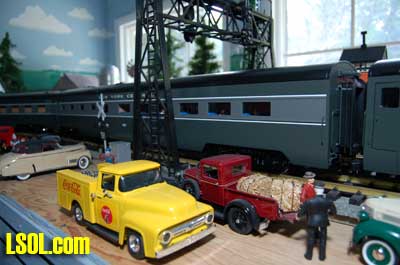 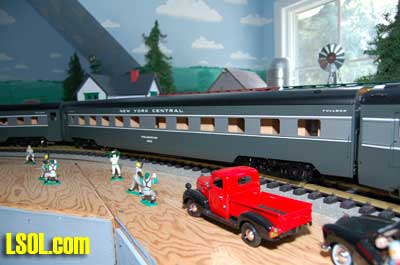 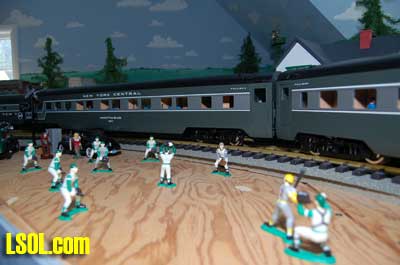
The research for this article came from the books, The Official Pullman-Standard Library Vol. 2 New York Central, written by W. David Randall and William M. Ross and The Passenger Car Library, Vol. 2 New York Central, North Eastern Railroads, written by W. David Randall, both published by RPC Publications, Inc. These series of books provides an excellent source of pictures, drawings and information about the Pullman-Standard, American Car & Foundry and Budd passenger cars. I used some of the photos and drawings from these books in this article. 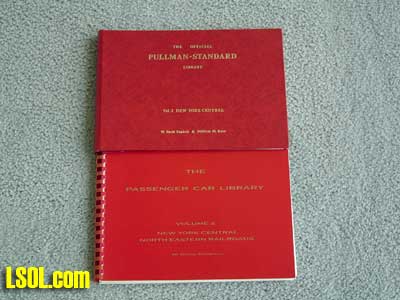 Additional sources of information about NYC passenger cars were found in NYC's Great Steel Fleet 1948-1967 and NYC's Light Weight Pass Cars, both by Jeoffrey Doughty and published by TLC Publishing Company. 20th Century Limited by Karl R. Zimmermann, published by MBI Publications and The Official Pullman-Standard Library Selected Heavyweight Cars by W. David Randall, published by RPC Publications were also excellent sources of background information on NYC streamlined and heavyweight passenger cars.
| Head-end Cars |
| Noel. Masterful review of the USAT head-end cars. Of equal interest and value is the history associated with these cars. Your account of the use and operations of the RPO is of particular note. Thanks for the education on RPOs. Product review and history all rolled up in one article-Great! |
| Jon D. Miller - 11/14/2007 - 05:18 |
| New Head-End Cars |
| Even though I am not a passenger service fan, the coverage of the three cars was interesting enough to hold my attention through the entire 38 page article, especially the RPO, which is one I have studied in the past. Excellent report. |
| Rick Henderson - 11/14/2007 - 06:46 |
| Head-end Cars |
| Noel It is a small world, was in the same GN RPO in Sac at the museum, I live a few miles away. It is a great museum, with much to offer, and the pictures you gave of it bring back the memories. I am more a GN or NP fan and if I only had the room and the curvature to run the USA passenger series on my railroad, it would be great. |
| KC Marshall - 11/14/2007 - 09:20 |
| USA Trains Head-End Cars |
| What a nice set-up. Thanks for the History lesson. Just exactly how big is the room you have your layout in? What's the larget turn radius on the layout? |
| Gerry Keffer - 11/14/2007 - 13:48 |
| USA Trains Head-End Cars |
| Gerry, I love history. That is the best part about writing articles for LSOL.com. I get to do the research. The layout room is 28' X 48' and the smallest radius is 5 feet. Most of them are 8 feet. K.C., I really enjoy the California Train Museum. I have been there several times. The last was just before the Convention in San Jose a couple of years ago. That is when I took those pictures. Noel |
| Noel Widdifield - 11/14/2007 - 14:00 |
| Head End Cars |
| Noel: Great article, thanks!- |
| Jim O'Connor - 11/14/2007 - 16:44 |
| passenger cars couplers |
| Noel, can the couplers be changed out on the USA trucks to A/C couplers? If not, can the end couplers be changed out to couple up to a A/C E8/9 loco? The Illinois Central had smooth side passenger cars on the Panama Limited and City of New Orleans. A/C says that they are going to produce an Illinois Central E8/9 on the second group of road names. I like you want to get a passenger consist. By just changing out the coupler on the trucks, maybe the passenger cars will work with 8' radius curves. |
| Ron Hill - 11/14/2007 - 19:44 |
| Head End Cars |
| Wow! Thanks Noel. Well done and very entertaining. |
| Phil Benedict - 11/14/2007 - 21:01 |
| Head End Cars |
| Great article Neol. Thats just what Im needed to get back to my own project and get working on it again. For I myself like Passenger railroadsand have stagnated on my work. This article gave me the motovation to get back to it thanks. |
| Rnn Garvey - 11/15/2007 - 09:00 |
| Head End Cars |
| Ron, I am down in Florida and my cars are up at my other house in Maryland so I can't check them for sure, but I believe that you can put A/C couplers on the cars or the first car. I will check them for you when I am back up there for Christmas. Most of the USA Trains cars can easily accept Kadee couplers so I think they would take Aristo ones. Noel |
| Noel Widdifield - 11/15/2007 - 09:17 |
| 1932 in Anderson, Indiana..... |
| FYI: By my trusty 1932 NYC timetable, dated March 13, 1932, a total of twelve trains made the stop at Anderson. #s 7-11,19,11,(again)59, and 45-43. All listed as "Daily", and were east and westbound. At that date they would not look like those USA beauties you are running. Ah me, memories, Noel, I'll just turn up my NYC System brakeman's lamp brighter and rest my feet on my NYC System step-box....(I rode the Advance Commodore Vanderbilt from the mid-1940's to the late 50's between Grand Central and Schenectady.) Great research on the workings of the head end cars. Thanks !!! |
| Kirke Fay - 11/15/2007 - 17:26 |
| Head End Cars |
| Kirke, I would stand at the station in Anderson and watch the passenger trains pass through during the late 40's and 50's. I rode a Hudson in the cab from Anderson to Indianapolis and an E-8 cab ride over the same route. I lived in the country east of Anderson on the NYC line and could also see them pass by at the back of our property. Great fading memories. Wish I had taken more pictures. Noel |
| Noel Widdifield - 11/16/2007 - 07:39 |
| Contact me |
| I have a little more NYC topics to fill your ear with: |
| Kirke Fay - 11/16/2007 - 15:32 |
Top of Page
|



